CHEMICAL IDENTIFICATION
-
RTECS NUMBER :
-
CY5250000
-
CHEMICAL NAME :
-
Benzenearsonic acid, 4-hydroxy-3-nitro-
-
CAS REGISTRY NUMBER :
-
121-19-7
-
BEILSTEIN REFERENCE NO. :
-
1976533
-
LAST UPDATED :
-
199701
-
DATA ITEMS CITED :
-
44
-
MOLECULAR FORMULA :
-
C6-H6-As-N-O6
-
MOLECULAR WEIGHT :
-
263.05
-
WISWESSER LINE NOTATION :
-
WNR BQ E-AS-QQO
HEALTH HAZARD DATA
ACUTE TOXICITY DATA
-
TYPE OF TEST :
-
LD50 - Lethal dose, 50 percent kill
-
ROUTE OF EXPOSURE :
-
Oral
-
SPECIES OBSERVED :
-
Rodent - rat
-
DOSE/DURATION :
-
81 mg/kg
-
TOXIC EFFECTS :
-
Details of toxic effects not reported other than lethal dose value
-
TYPE OF TEST :
-
LD50 - Lethal dose, 50 percent kill
-
ROUTE OF EXPOSURE :
-
Intraperitoneal
-
SPECIES OBSERVED :
-
Rodent - rat
-
DOSE/DURATION :
-
66 mg/kg
-
TOXIC EFFECTS :
-
Behavioral - muscle weakness Gastrointestinal - other changes Kidney, Ureter, Bladder - interstitial nephritis
-
TYPE OF TEST :
-
LD50 - Lethal dose, 50 percent kill
-
ROUTE OF EXPOSURE :
-
Oral
-
SPECIES OBSERVED :
-
Rodent - mouse
-
DOSE/DURATION :
-
244 mg/kg
-
TOXIC EFFECTS :
-
Details of toxic effects not reported other than lethal dose value
-
TYPE OF TEST :
-
LD50 - Lethal dose, 50 percent kill
-
ROUTE OF EXPOSURE :
-
Oral
-
SPECIES OBSERVED :
-
Mammal - dog
-
DOSE/DURATION :
-
50 mg/kg
-
TOXIC EFFECTS :
-
Gastrointestinal - nausea or vomiting Liver - hepatitis (hepatocellular necrosis), diffuse Kidney, Ureter, Bladder - hematuria
-
TYPE OF TEST :
-
LD50 - Lethal dose, 50 percent kill
-
ROUTE OF EXPOSURE :
-
Oral
-
SPECIES OBSERVED :
-
Bird - chicken
-
DOSE/DURATION :
-
110 mg/kg
-
TOXIC EFFECTS :
-
Gastrointestinal - other changes Blood - hemorrhage
-
TYPE OF TEST :
-
LD50 - Lethal dose, 50 percent kill
-
ROUTE OF EXPOSURE :
-
Intraperitoneal
-
SPECIES OBSERVED :
-
Bird - chicken
-
DOSE/DURATION :
-
34 mg/kg
-
TOXIC EFFECTS :
-
Behavioral - somnolence (general depressed activity) Gastrointestinal - other changes Liver - hepatitis (hepatocellular necrosis), diffuse
-
TYPE OF TEST :
-
LD50 - Lethal dose, 50 percent kill
-
ROUTE OF EXPOSURE :
-
Oral
-
SPECIES OBSERVED :
-
Bird - turkey
-
DOSE/DURATION :
-
61 mg/kg
-
TOXIC EFFECTS :
-
Gastrointestinal - other changes Blood - hemorrhage
-
TYPE OF TEST :
-
TDLo - Lowest published toxic dose
-
ROUTE OF EXPOSURE :
-
Oral
-
SPECIES OBSERVED :
-
Rodent - rat
-
DOSE/DURATION :
-
2647 mg/kg/13W-C
-
TOXIC EFFECTS :
-
Behavioral - food intake (animal) Related to Chronic Data - death
-
TYPE OF TEST :
-
TDLo - Lowest published toxic dose
-
ROUTE OF EXPOSURE :
-
Oral
-
SPECIES OBSERVED :
-
Rodent - rat
-
DOSE/DURATION :
-
11200 mg/kg/14D-C
-
TOXIC EFFECTS :
-
Related to Chronic Data - death
-
TYPE OF TEST :
-
TDLo - Lowest published toxic dose
-
ROUTE OF EXPOSURE :
-
Oral
-
SPECIES OBSERVED :
-
Rodent - mouse
-
DOSE/DURATION :
-
1680 mg/kg/14D-C
-
TOXIC EFFECTS :
-
Related to Chronic Data - death
-
TYPE OF TEST :
-
TDLo - Lowest published toxic dose
-
ROUTE OF EXPOSURE :
-
Oral
-
SPECIES OBSERVED :
-
Rodent - mouse
-
DOSE/DURATION :
-
8736 mg/kg/13W-C
-
TOXIC EFFECTS :
-
Lungs, Thorax, or Respiration - bronchiolar dilation Liver - changes in liver weight Related to Chronic Data - death
-
TYPE OF TEST :
-
TDLo - Lowest published toxic dose
-
ROUTE OF EXPOSURE :
-
Oral
-
SPECIES OBSERVED :
-
Bird - chicken
-
DOSE/DURATION :
-
3625 mg/kg/13W-C
-
TOXIC EFFECTS :
-
Kidney, Ureter, Bladder - changes in bladder weight Blood - hemorrhage Related to Chronic Data - death
-
TYPE OF TEST :
-
TDLo - Lowest published toxic dose
-
ROUTE OF EXPOSURE :
-
Oral
-
SPECIES OBSERVED :
-
Bird - turkey
-
DOSE/DURATION :
-
2019 mg/kg/36D-C
-
TOXIC EFFECTS :
-
Peripheral Nerve and Sensation - structural change in nerve or sheath Nutritional and Gross Metabolic - weight loss or decreased weight gain Related to Chronic Data - death
-
TYPE OF TEST :
-
TDLo - Lowest published toxic dose
-
ROUTE OF EXPOSURE :
-
Oral
-
SPECIES OBSERVED :
-
Rodent - rat
-
DOSE/DURATION :
-
2920 mg/kg/2Y-C
-
TOXIC EFFECTS :
-
Tumorigenic - equivocal tumorigenic agent by RTECS criteria Gastrointestinal - tumors
MUTATION DATA
-
TYPE OF TEST :
-
Mutation in mammalian somatic cells
-
TEST SYSTEM :
-
Rodent - mouse Lymphocyte
-
DOSE/DURATION :
-
400 mg/L
-
REFERENCE :
-
NTPTR* National Toxicology Program Technical Report Series. (Research Triangle Park, NC 27709) No.206- Volume(issue)/page/year: NTP-TR-345,1989 *** REVIEWS *** TOXICOLOGY REVIEW 85DHAX "Medical and Biologic Effects of Environmental Pollutants Series," Washington, DC, National Academy of Sciences, 1972-77 Volume(issue)/page/year: As,-,1977 *** U.S. STANDARDS AND REGULATIONS *** MSHA STANDARD-air:TWA 0.5 mg(As)/m3 DTLVS* The Threshold Limit Values (TLVs) and Biological Exposure Indices (BEIs) booklet issues by American Conference of Governmental Industrial Hygienists (ACGIH), Cincinnati, OH, 1996 Volume(issue)/page/year: 3,16,1971 OSHA PEL (Gen Indu):8H TWA 0.5 mg(As)/m3 CFRGBR Code of Federal Regulations. (U.S. Government Printing Office, Supt. of Documents, Washington, DC 20402) Volume(issue)/page/year: 29,1910.1000,1994 OSHA PEL (Construc):8H TWA 0.5 mg(As)/m3 CFRGBR Code of Federal Regulations. (U.S. Government Printing Office, Supt. of Documents, Washington, DC 20402) Volume(issue)/page/year: 29,1926.55,1994 OSHA PEL (Shipyard):8H TWA 0.5 mg(As)/m3 CFRGBR Code of Federal Regulations. (U.S. Government Printing Office, Supt. of Documents, Washington, DC 20402) Volume(issue)/page/year: 29,1915.1000,1993 OSHA PEL (Fed Cont):8H TWA 0.5 mg(As)/m3 CFRGBR Code of Federal Regulations. (U.S. Government Printing Office, Supt. of Documents, Washington, DC 20402) Volume(issue)/page/year: 41,50-204.50,1994 *** OCCUPATIONAL EXPOSURE LIMITS *** OEL-ARAB Republic of Egypt:TWA 0.2 mg(As)/m3 JAN 1993 OEL-AUSTRALIA:TWA 0.05 mg(As)/m3;Carcinogen JAN 1993 OEL-BELGIUM:TWA 0.2 mg(As)/m3 JAN 1993 OEL-DENMARK:TWA 0.05 mg(As)/m3 JAN 1993 OEL-FINLAND;Carcinogen JAN 1993 OEL-FRANCE:TWA 0.2 mg(As)/m3 JAN 1993 OEL-HUNGARY:STEL 0.5 mg(As)/m3;Carcinogen JAN 1993 OEL-INDIA:TWA 0.2 mg(As)/m3 JAN 1993 OEL-THE PHILIPPINES:TWA 0.5 mg(As)/m3 JAN 1993 OEL-POLAND:TWA 0.3 mg(As)/m3 JAN 1993 OEL-SWEDEN:TWA 0.03 mg(As)/m3;Carcinogen JAN 1993 OEL-SWITZERLAND:TWA 0.1 mg(As)/m3;Carcinogen JAN 1993 OEL-THAILAND:TWA 0.5 mg(As)/m3 JAN 1993 OEL-TURKEY:TWA 0.5 mg(As)/m3 JAN 1993 OEL-UNITED KINGDOM:TWA 0.2 mg(As)/m3 JAN 1993 OEL IN BULGARIA, COLOMBIA, JORDAN, KOREA check ACGIH TLV OEL IN NEW ZEALAND, SINGAPORE, VIETNAM check ACGIH TLV *** NIOSH STANDARDS DEVELOPMENT AND SURVEILLANCE DATA *** NIOSH OCCUPATIONAL EXPOSURE SURVEY DATA : NOHS - National Occupational Hazard Survey (1974) NOHS Hazard Code - M0637 No. of Facilities: 21 (estimated) No. of Industries: 1 No. of Occupations: 2 No. of Employees: 124 (estimated) NOES - National Occupational Exposure Survey (1983) NOES Hazard Code - M0637 No. of Facilities: 210 (estimated) No. of Industries: 1 No. of Occupations: 6 No. of Employees: 3230 (estimated)
|
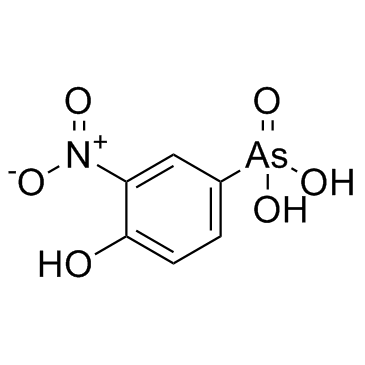




 CAS#:98-14-6
CAS#:98-14-6 CAS#:108-95-2
CAS#:108-95-2 CAS#:5440-06-2
CAS#:5440-06-2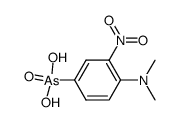 CAS#:861528-00-9
CAS#:861528-00-9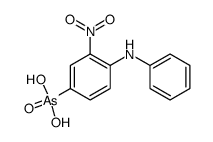 CAS#:741258-62-8
CAS#:741258-62-8 CAS#:7664-93-9
CAS#:7664-93-9 CAS#:5430-08-0
CAS#:5430-08-0 CAS#:5440-04-0
CAS#:5440-04-0![Arsonic acid,[4-(acetylamino)phenyl]- (9CI) Structure](https://image.chemsrc.com/caspic/435/618-22-4.png) CAS#:618-22-4
CAS#:618-22-4![Arsonic acid,[4-(dimethylamino)phenyl]- (9CI) Structure](https://image.chemsrc.com/caspic/342/91484-30-9.png) CAS#:91484-30-9
CAS#:91484-30-9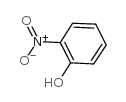 CAS#:88-75-5
CAS#:88-75-5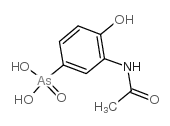 CAS#:97-44-9
CAS#:97-44-9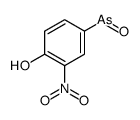 CAS#:102107-61-9
CAS#:102107-61-9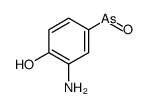 CAS#:306-12-7
CAS#:306-12-7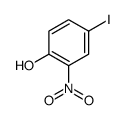 CAS#:21784-73-6
CAS#:21784-73-6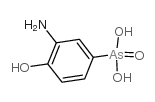 CAS#:2163-77-1
CAS#:2163-77-1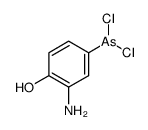 CAS#:455-83-4
CAS#:455-83-4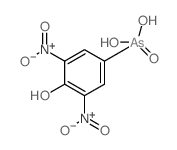 CAS#:6269-50-7
CAS#:6269-50-7